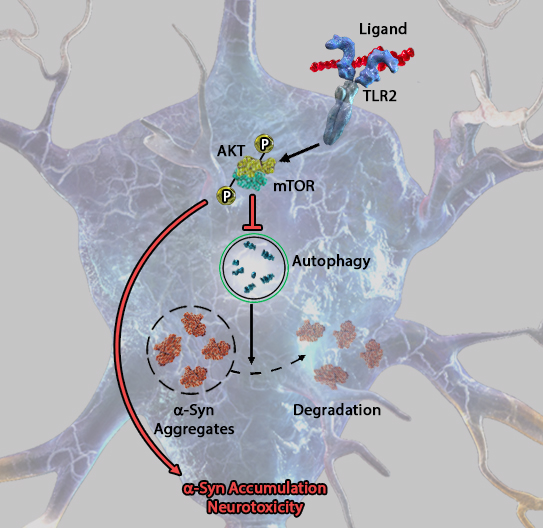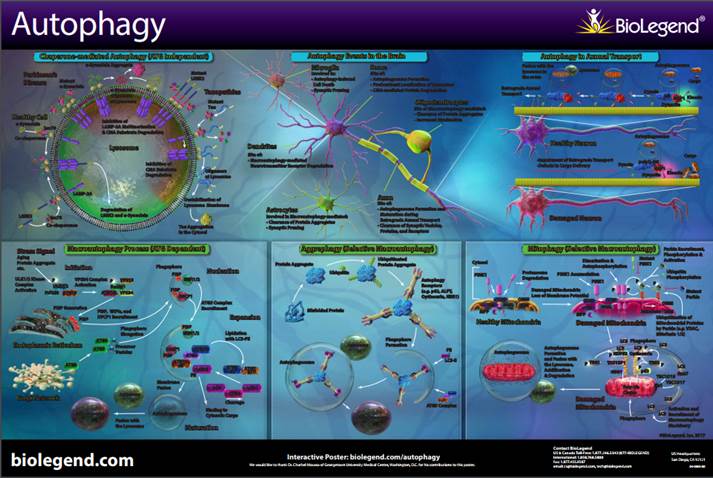 |
Parkinson's disease is associated with abnormal deposits of α-Synuclein in neural cells. As such, the process of autophagy is critical for the clearance and degradation of these accumulated proteins. Kim et al. found that triggering of TLR2 led to the activation of AKT and mTOR proteins. In turn, AKT and mTOR inhibited the autophagy process, resulting in the accumulation of α-Synuclein aggregates and neurotoxicity. BioLegend offers reagents for the study of the immune and neurological components of this pathway and more. Adapted from Kim C. et al. 2016. Cell Rep. 13:771. Pubmed |
 |
|
 |
Our new poster is focused on the process of autophagy, featuring detailed mechanisms for macroautophagy, aggrephagy, mitophagy, and more. |
 |
| In addition to reagents, we also provide helpful webpages that can help you understand the logic behind the reagents you purchase. Learn more with our webpages on Parkinson's disease and the Conformations of α-Synuclein. |
*Any references to promotions on this page may not be valid at this time. View our promotions page for the most up-to-date promotions.
 Login / Register
Login / Register 








Follow Us